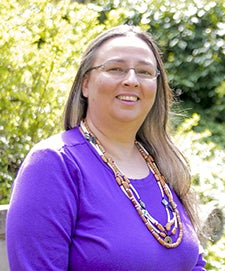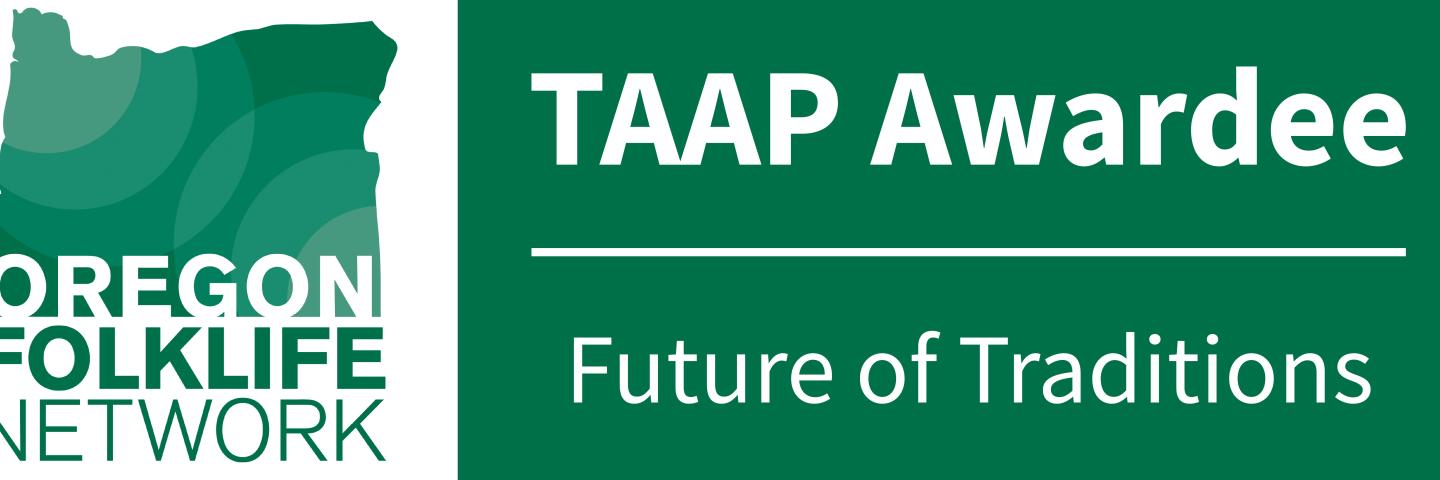 | Traditional Skill/Art Craft: Traditional Coos, Lower Umpqua, and Siuslaw Stories and Language Years Awarded: 2015 Contact Information: Phone: (707)812-0705 Email: miluk@dslextreme.com |
ARTIST BIOGRAPHY
Patricia Whereat Phillips is a traditional Coos, Lower Umpqua, and Siuslaw storyteller. Born in Coos Bay, Patricia learned much of the Coos, Lower Umpqua, and Siuslaw history and traditions from her father, Donald Whereat and other tribal elders while growing up, but began intensively studying them while working on a master’s in Linguistics from the University of Oregon, where she did her thesis on the grammar of the Hanis Coos language. Since then she has co-authored a book on ethnobotany and been working on a dictionary of the Hanis Coos language, as well as building wordlists of the Milluk Coos and Siuslaw languages and blogging about the traditional stories she tells. In her own words, “One of the things that is core to indigenous culture and heritage is a relationship to the land, and much of that is contained with the stories and names.”
APPRENTICE BIOGRAPHY - Enna Helms 2015
Enna Helms is a member of the Confederated Tribes of Coos, Lower Umpqua and Sisulaw, she is Miluk Coos and Cherokee. Since her youth, she has participated in many cultural events including the gathering of traditional foods, weaving materials, and other cultural arts. She has learned Chinook Wawa and feels that learning the language is an important part of continuing traditional arts and connecting with her cultural heritage. She feels it is important to learn the traditional stories in ancestral places to feel grounded and connected. Learning the traditional stories is a passion of hers and she feels it is her responsibility to pass on the tradition to her family and community.
Q+A WITH THE MENTOR ARTIST
Describe your traditional art.
Body
Telling traditional stories of the Coos, Lower Umpqua, and Siuslaw people from the Oregon coast, along with the traditional place names of where some of the stories take pace. The Trickster Cycle of stories were traditionally told only in winter. Other stories might be told any time, especially when people were camping for fishing or berrying, and telling stories about morals for fishing and so on, or stories associated with the place the people were staying. I started learning place names and stories when I was still in high school 30 years ago, although I didn’t really begin to learn these things well until after I studied linguistics at the University of Oregon 1994-1996.
How did you come to learn this tradition?
Body
Some I learned from tribal elders like my father, Don Whereat, and some of my cousins like Ida Wages Helms, Grace Brainard, and Ray Willard. Much I learned through studying elders who had died before I was born, in their words recorded by linguists such as Leo Frachtenberg, Melville Jacobs, and J.P. Harrington.
Why is this cultural tradition important to your community?
Body
Very few people today know very many of the traditional Coos, Lower Umpqua, and Siuslaw legends, and fewer still know the traditional place names and their meanings associated with many of these stories. It is important to pass the knowledge of both stories and place names down to younger generations. One of the things that is core to indigenous culture and heritage is a relationship to the land, and much of that is contained within the stories and names. This work will enhance the ability of the apprentice and Tribal people to reclaim culture and language. It is important that this work takes place within ancestral areas, because the world view of our ancestors is inseparably tied to land.
Experience/Honors
Body
I haven’t received any awards. I have told traditional stories to many classes over the years at public schools, universities, Tsalila Watershed Festival in Reedsport, the Coos Bay Public Library in 2009 as part of the Oregon 150 celebration, tribal culture camp, and last year at the Indian Child Welfare Conference hosted by the Confederated Tribes Coos, Lower Umpqua, and Siuslaw Indians.
Visit OFN's Culture Keepers Roster to learn more about the artist.
Traditional Arts Apprenticeship Program
More OFN programs
OFN main page
